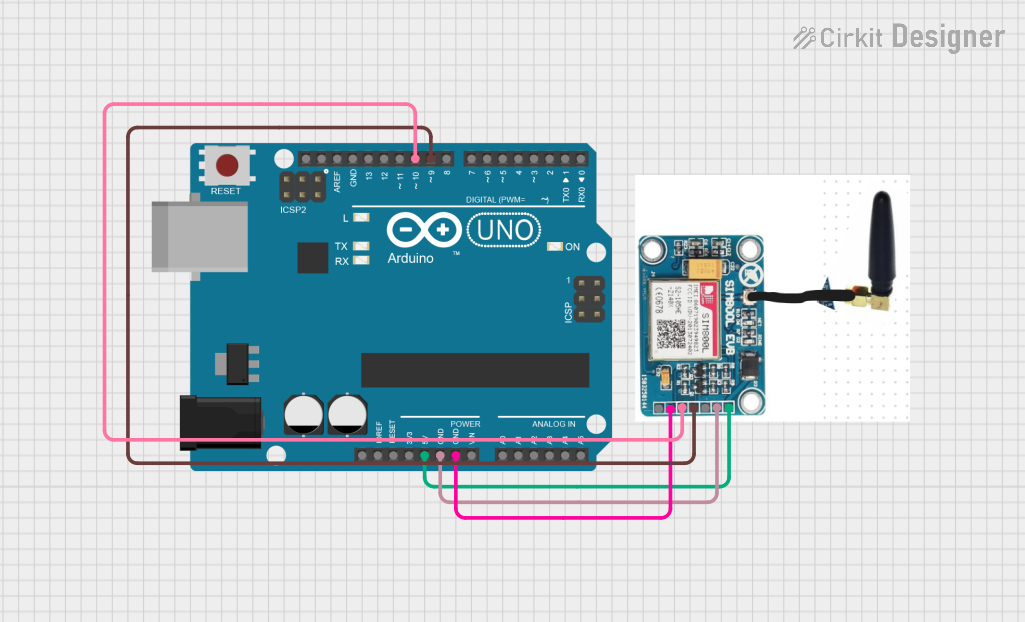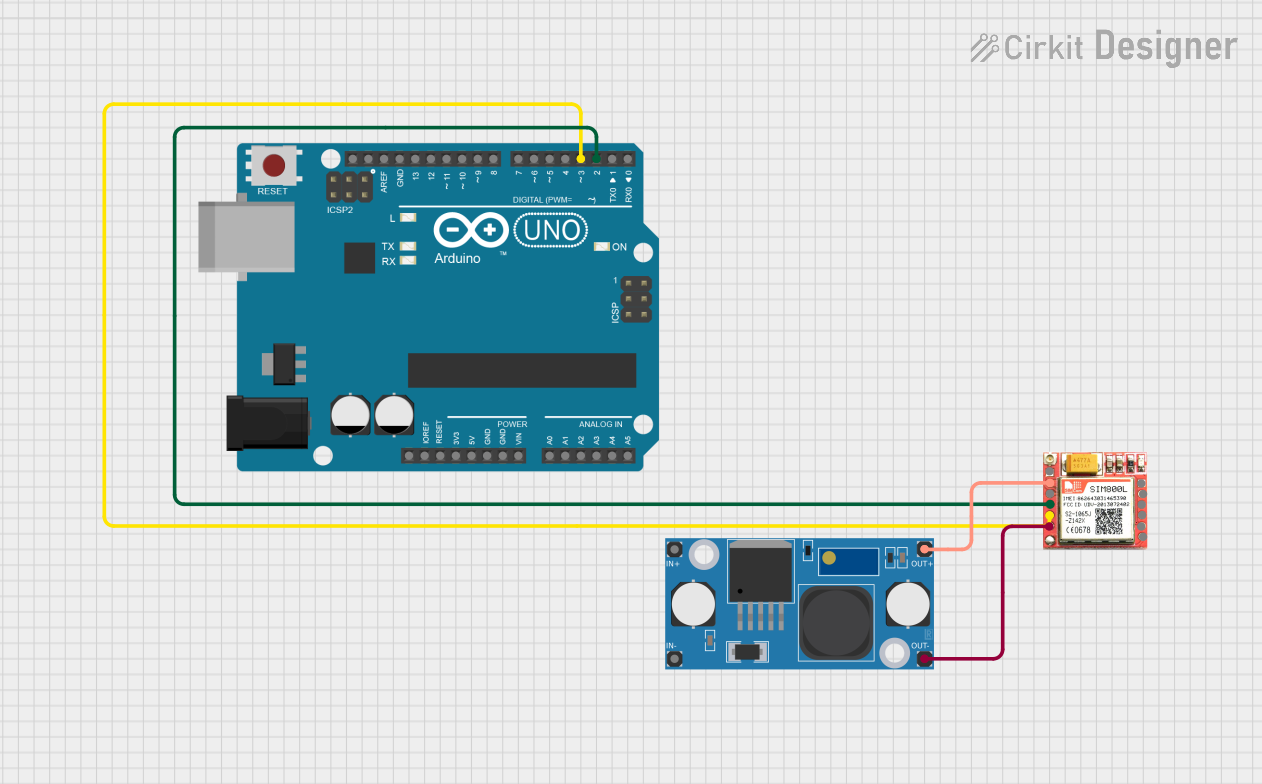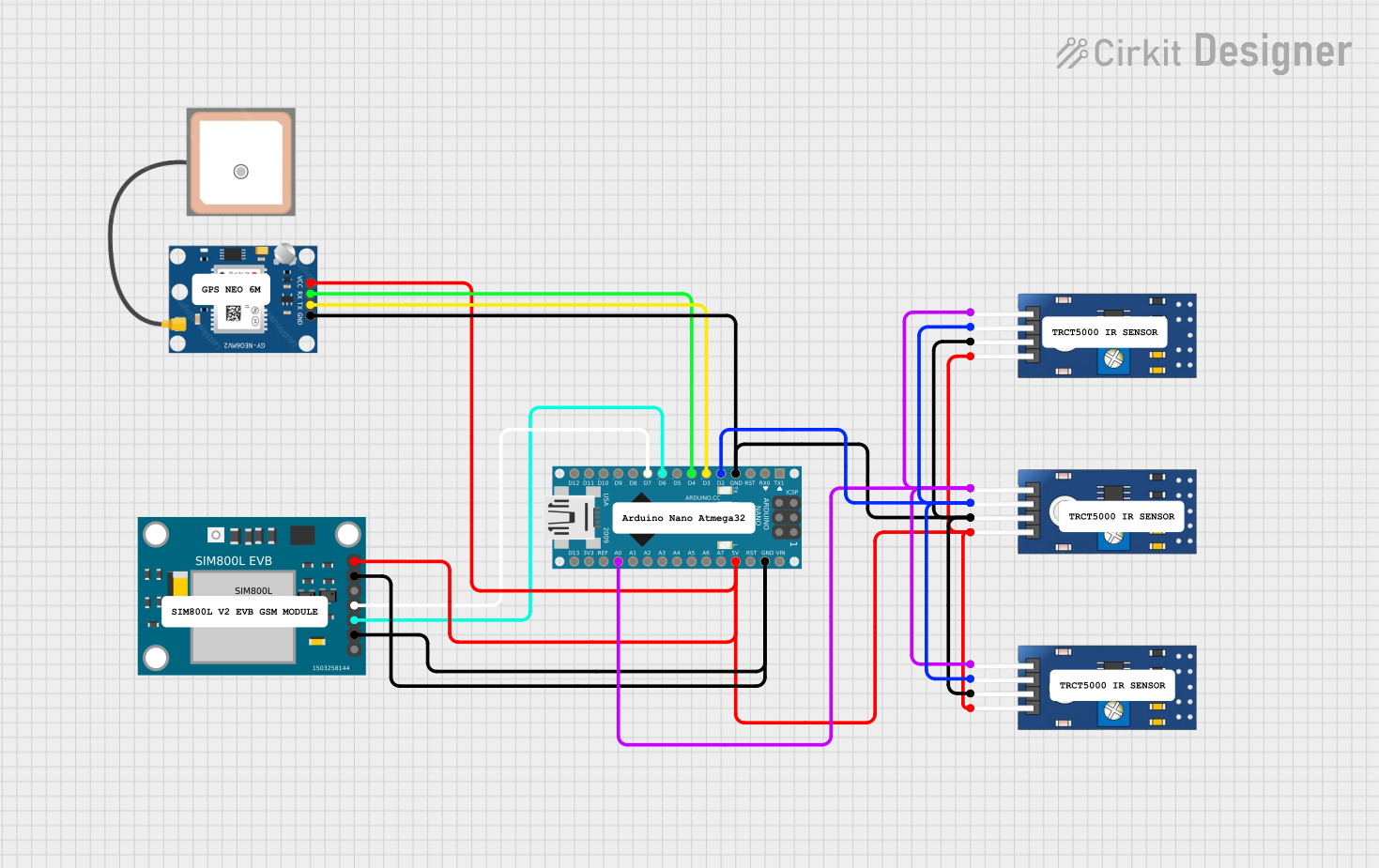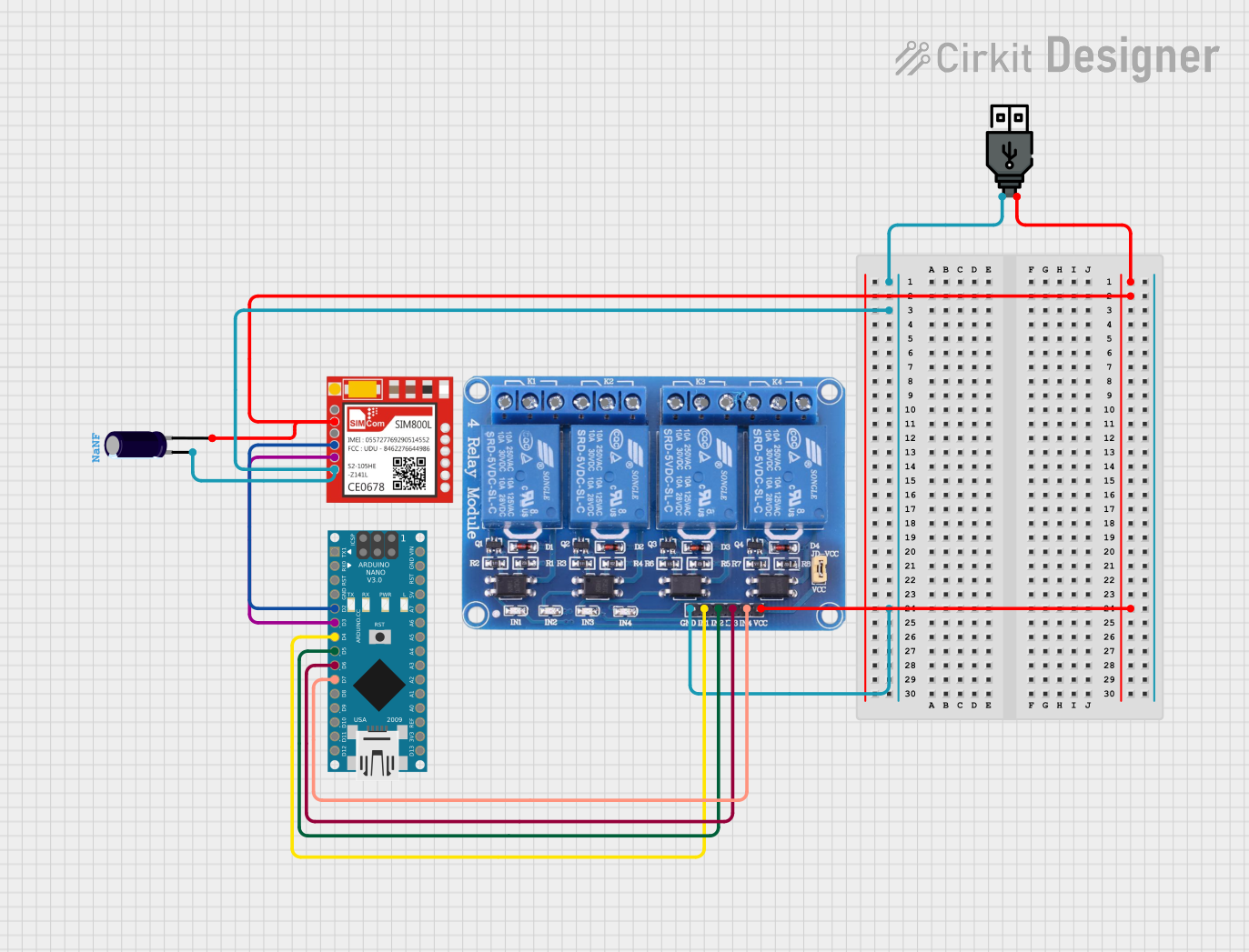
How to Use SIM800c GSM Module: Examples, Pinouts, and Specs
 Design with SIM800c GSM Module in Cirkit Designer
Design with SIM800c GSM Module in Cirkit DesignerIntroduction
The SIM800c GSM Module is a versatile and compact electronic component that provides GSM/GPRS communication capabilities to embedded systems. It enables devices to make phone calls, send and receive SMS messages, and connect to the internet through GPRS. This module is widely used in various applications such as remote data logging, security systems, automotive and mobile applications.
Explore Projects Built with SIM800c GSM Module

 Open Project in Cirkit Designer
Open Project in Cirkit Designer
 Open Project in Cirkit Designer
Open Project in Cirkit Designer
 Open Project in Cirkit Designer
Open Project in Cirkit Designer
 Open Project in Cirkit Designer
Open Project in Cirkit DesignerExplore Projects Built with SIM800c GSM Module

 Open Project in Cirkit Designer
Open Project in Cirkit Designer
 Open Project in Cirkit Designer
Open Project in Cirkit Designer
 Open Project in Cirkit Designer
Open Project in Cirkit Designer
 Open Project in Cirkit Designer
Open Project in Cirkit DesignerCommon Applications and Use Cases
- Remote monitoring and control systems
- Vehicle tracking with GPS data transmission
- SMS-based remote alerts and automation
- IoT devices requiring cellular network connectivity
- Emergency call systems
Technical Specifications
Key Technical Details
- Frequency Bands: Quad-band 850/900/1800/1900MHz
- GPRS Data: Downlink/uplink transfer: max 85.6 kbps
- Transmission Power:
- Class 4 (2W) for GSM850 and EGSM900
- Class 1 (1W) for GSM1800 and GSM1900
- Power Supply: 3.4V - 4.4V (Typical 4.0V)
- Operating Temperature: -40°C to +85°C
Pin Configuration and Descriptions
| Pin Number | Name | Description |
|---|---|---|
| 1 | VCC | Power supply input (3.4V - 4.4V) |
| 2 | RST | Module reset (active low) |
| 3 | RXD | Serial data receive pin |
| 4 | TXD | Serial data transmit pin |
| 5 | GND | Ground connection |
| 6 | RI | Ring indicator (active low) |
| 7 | DTR | Data Terminal Ready control pin (active low) |
| 8 | CTS | Clear to Send, flow control pin (active low) |
| 9 | RTS | Request to Send, flow control pin (active high) |
| 10 | MIC+ | Positive microphone input for voice calls |
| 11 | MIC- | Negative microphone input for voice calls |
| 12 | SPK+ | Positive speaker output for voice calls |
| 13 | SPK- | Negative speaker output for voice calls |
Usage Instructions
How to Use the Component in a Circuit
- Power Supply: Connect a stable power source to the VCC and GND pins. Ensure that the voltage is within the specified range.
- Serial Communication: Connect the RXD and TXD pins to the corresponding TX and RX pins of your microcontroller or UART interface.
- SIM Card: Insert a SIM card into the SIM card holder of the SIM800c module.
- Antenna: Attach a GSM antenna to the module to ensure proper signal reception and transmission.
- Audio (Optional): If voice functionality is required, connect a microphone and speaker to the MIC+/- and SPK+/- pins, respectively.
Important Considerations and Best Practices
- Always use a regulated power supply to prevent damage to the module.
- Ensure that the antenna is properly connected before powering up the module.
- Use level shifters if the microcontroller operates at a different logic level than the module.
- Follow ESD precautions when handling the module to avoid static damage.
Example Code for Arduino UNO
#include <SoftwareSerial.h>
SoftwareSerial sim800c(7, 8); // RX, TX
void setup() {
// Begin serial communication with Arduino and Arduino IDE (Serial Monitor)
Serial.begin(9600);
// Begin serial communication with SIM800c and set baud rate
sim800c.begin(9600);
// Set module to SMS mode
sim800c.println("AT+CMGF=1\r");
delay(1000);
// Set module to receive SMS in text mode
sim800c.println("AT+CNMI=1,2,0,0,0\r");
delay(1000);
}
void loop() {
// Check if the SIM800c module is sending a message
if (sim800c.available()) {
Serial.write(sim800c.read());
}
// Check if the Serial Monitor is sending a message
if (Serial.available()) {
sim800c.write(Serial.read());
}
}
Troubleshooting and FAQs
Common Issues Users Might Face
- Power Issues: If the module does not power up, check the power supply and connections.
- Signal Issues: Poor signal quality can affect communication. Ensure the antenna is properly connected and positioned.
- SIM Card Issues: If the module cannot connect to the network, verify that the SIM card is active and properly inserted.
Solutions and Tips for Troubleshooting
- Power Supply: Use a multimeter to verify the voltage at the VCC pin.
- Signal Strength: Use the AT command
AT+CSQto check the signal quality. - SIM Card: Ensure the SIM card has no PIN code or use the AT command
AT+CPINto enter the PIN.
FAQs
Q: Can the SIM800c module connect to a 5V logic microcontroller directly? A: No, a level shifter is recommended to convert the 5V logic level to the 3.3V level required by the SIM800c module.
Q: How can I send an SMS using the SIM800c module?
A: Use the AT command AT+CMGS="phone_number" followed by the message and a Ctrl+Z character to send an SMS.
Q: What is the baud rate for communication with the SIM800c module?
A: The default baud rate is 9600 bps, but it can be configured with the AT command AT+IPR.
Q: How do I reset the SIM800c module? A: The module can be reset by pulling the RST pin low for a short period.